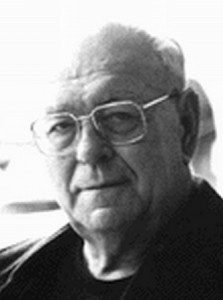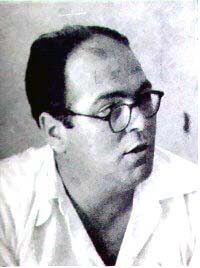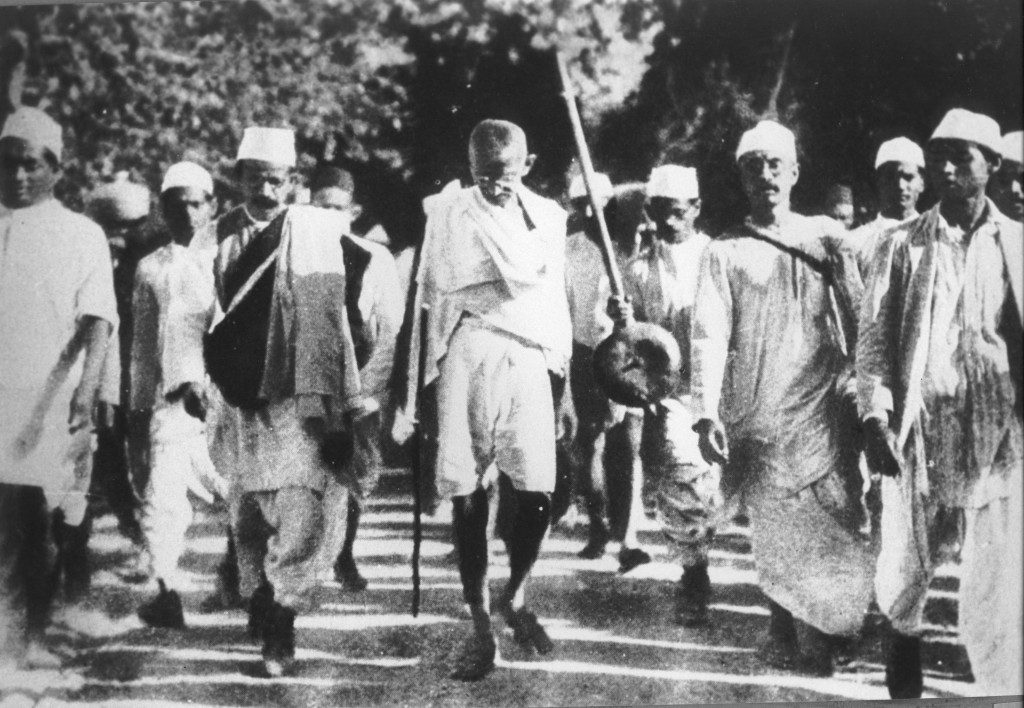by Winin Pereira and Jeremy Seabrook
The other day there was a report in the news about a little girl in Bombay who had never seen a live butterfly. There must be something drastically wrong with the way we have organised our lives, or the way it is organised for us, to have resulted in our exchanging the beauty of butterflies on the wing for a handful of hi-tech trinkets. The relationship between our internal environment, (human appetites) and the external one (the planet) has to be reconstructed around a less damaging and ruinous relationship.
Traditional Respect for the Earth
The ancient sages discerned a principle of harmony pervading the entire universe. Each individual forms part of all other life and non-life, one with the earth. This concept requires respect for all that surrounds us, since the individual self merges with the rest of creation. Such a perception can form the basis for a just, sustainable society.
Read the rest of this article »
by Joseph Geraci
In March, 1969, Danilo Dolci was in New York for the publication of his book, The Man Who Plays Alone. Dorothy Day and I had the good fortune of meeting him for an hour and a half, in a quiet corner of the lobby of the famous Algonquin Hotel, along with ten or so others that included Dolci’s biographer, Jerre Mangione, his editor, the journalist and co-founder of Pax, Eileen Egan and various press people.

Danilo Dolci; c. 1970; public domain image; photographer unknown.
Dolci was actually born in Sezana, Yugoslavia, under Italian administration at the time of his birth. So, if you were to imagine a small Sicilian type, you would be surprised. He is over six feet tall and solidly built; his eyes dark blue, behind gold-rimmed glasses. He was wearing an inexpensive knit suit and tie, and spoke without gestures. His answers to our questions were short and precise, often only a yes or no; he always looked directly at the questioner, sometimes returned a question with a question, and sometimes made a joke. Dolci has also published a volume of poetry; he uses words carefully and precisely.
Read the rest of this article »
by Joseph Geraci
A Passion for Sicilians: The World Around Danilo Dolci by Jerre Mangione. New York: William Morrow, 1968.
Danilo Dolci has been dubbed the “Gandhi of Sicily.” Since the mid 1950s he has attracted attention as one of the world’s leading social reformers and nonviolent activists. His methods and thought should have attracted considerable attention in America, where the need for both grassroots planning (pianificazione) and local redevelopment is apparent, although he remains relatively unknown.

Danilo Dolci, c. 1955; photographer unknown; courtesy of wikimedia.org
Who is Dolci? This is the question Mangione’s comprehensive book sets out to answer. Thanks to a Fulbright grant, Mangione was able to spend several months of 1965 in Partinico, living near Dolci, and his Center of Studies. Part journal, part travel diary, part biography, it holds surprises. For example, Dolci is not Sicilian, and is barely Italian. “His Italian father had German and Italian parents; his Slav mother had parents who were German and Slav. This makes him half German, one quarter Slav and one quarter Italian.” Indeed, the town of Sezana, where he was born on June 29, 1924, is part of Yugoslavia; at the time “administered” by Italy. He began his intellectual life reading not the literature of rebellion and revolution but the classics, including the Koran, the Bhagavad Gita, Confucius and the Tao te Ching. He never read Thoreau and read Gandhi only after a French journalist referred to him as the “Gandhi of Sicily.” His first published book was a book of poetry. He studied architecture for four years in Milan but did not take a degree, stopping short a few weeks before graduation.
Read the rest of this article »
by Joseph Geraci

Original poster; artist unknown; courtesy of gandhijis-talisman.posterous.com
An extraordinary meeting took place October 7 [1969] in New York City, between Danilo Dolci and Cesar Chavez. That two of the most prominent leaders of the nonviolent land reform and resistance movement should meet might afford a glimpse of not only where the movement was, but in what direction it might conceivably go.
The meeting was attended by only a handful of people: Mrs. Coley, who was handling the arrangements for Dolci’s visit; Mark Silverman, head of the grape boycott in New York State; Anne Israel, a supporter of the boycott in whose apartment Chavez was staying; Dorothy Day; the photographer Bob Fitch, and myself. It was to begin at 6:30 P. M., but as Dolci was coming to the meeting directly from the airport, there was the inevitable delay. Chavez had arrived earlier with several co-workers, New York being the latest stop on their national tour. He walks with a slight limp, the result of a bone disease contracted after a fast. As we waited for Dolci, he told us that the recent grape boycott rally in Washington had been very successful. Spirits were high and there was a real determination to work hard and continue. In talking to some of the other boycotters there that evening one had the same impression. Mr. Ortiz, an organizer from Sacramento who will be helping Mark Silverman in New York, said that progress was slow but that everyone was very hopeful.
Read the rest of this article »
by Geoffrey Ostergaard
“In the ideal state every one is his own ruler. He rules himself in such a manner that he is never a hindrance to his neighbour. In such a state, therefore, there is no political power because there is no State.” M. Gandhi (Young India, 2 July 1931)
The practical difference between socialism and anarchism, at the purely local level, is small. They differ, of course, in how each responds to the question of a state and national policy. Gandhi saw an India with a plethora of local problems, and for them he prescribed local solutions. In this respect, his thinking and philosophy most closely resemble Western anarchism than any other political philosophy. In fact, he acknowledges Tolstoy, especially his spiritual anarchist treatise The Kingdom of God Is Within You, as an influence. But Gandhi’s political thought is not derivative, it originally combines his Hinduism and his thoughts on non-violence. Nevertheless, many concepts familiar to the student of Western anarchism are also present in the philosophy of Sarvodaya.
Read the rest of this article »
by George Lakey
Otpur (“Resistance” in Serbian) began as hundreds, then thousands, then tens of thousands of young people took to the streets to rid their country of dictator Slobadan Milosevic. Impatient with the cautious ways of many of their pro-democracy elders, the youths organized in coffee bars and schools, posted graffiti almost everywhere, and used their street actions to embarrass the regime.
Milosevic counter-attacked. His police routinely beat up the protesters, in the streets and more thoroughly in the police stations. His spies were everywhere. His monopoly of the mass media meant that the Otpur was described as hoodlums and terrorists. In October 2000 Otpur won; joined by hundreds of thousands of workers and professionals, the young people threw Milosevic out. His party was in disarray, his police in confusion, his army was split.
From the moment Otpur began it had a strategy. The young people were immensely creative in their tactics and at the same time realized that no struggle is ever won simply by a series of actions. Otpur activists knew they could only succeed by creating a strategy that guided a largely decentralized network of groups. Cynical outsiders were skeptical when Otpur activists claimed not to have a leader, when the young people said they were all leaders and shared responsibility for their actions and their common discipline. What the skeptics overlooked was the power of strategy as a unifying force, taking its place beside the rebel energy and the lessons of recent history that the young people shared. Otpur activists didn’t need an underground commander giving them their marching orders because they shared a strategy they believed in; they were happy to improvise creatively within that strategic framework.
Read the rest of this article »
by Rosemary Morrow
“It is, perhaps, the greatest failure of collective leadership since the first world war. The Earth’s living systems are collapsing, and the leaders of some of the most powerful nations – the US, the UK, Germany, Russia – could not even be bothered to turn up and discuss it. Those who did attend the Earth summit last week solemnly agreed to keep stoking the destructive fires: sixteen times in their text they pledged to pursue “sustained growth”, the primary cause of the biosphere’s losses.”
This was the opening paragraph by George Monbiot in the Guardian (25 June 2012) at the end of the Earth Summit convened to rescue all life from global climate change and other degradation. Those of us who follow the science feel dismayed.
Yet it has left us with only one path, that of ahimsa, nonviolence and almost certainly civil disobedience. As with M. Gandhi’s struggle for independence, we must be prepared to break the laws. We must disregard those who have no care for Nature and Life as we know it. We must abandon any sense that we will be saved by others. We must act as Earth’s residents, to restore Earth’s living systems, impelled by kindness, compassion and conscience for Nature.
Read the rest of this article »
by Vandana Shiva

Gandhi on the Salt March, 1930.
In Hind Swaraj, Gandhi exhorts using ‘soul force’ as a means to seek ‘right livelihood’ – which is what real freedom is all about. Gandhi’s Hind Swaraj has, for me, been the best teaching on real freedom. It teaches the gospel of love in place of hate. It replaces violence with self-sacrifice. It puts ‘soul force’ against brute force. For Gandhi, slavery and violence were not just a consequence of imperialism: a deeper slavery and violence were intrinsic to industrialism, which Gandhi called “modern civilisation”.He identified modern civilisation as the real cause of loss of freedom. “Civilisation seeks to increase bodily comforts and it fails miserably even in doing so… This civilisation is such that one has only to be patient and it will be self-destroyed.”
Read the rest of this article »








